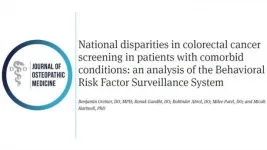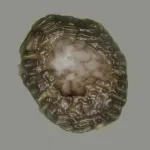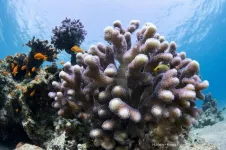(Press-News.org) MADISON -- From radio to television to the internet, telecommunications transmissions are simply information carried on light waves and converted to electrical signals.
Silicon-based fiber optics are currently the best structures for high-speed, long distance transmissions, but graphene -- an all-carbon, ultra-thin and adaptable material -- could improve performance even more.
In a study published April 16 in ACS Photonics, University of Wisconsin-Madison researchers fabricated graphene into the smallest ribbon structures to date using a method that makes scaling-up simple. In tests with these tiny ribbons, the scientists discovered they were closing in on the properties they needed to move graphene toward usefulness in telecommunications equipment.
"Previous research suggested that to be viable for telecommunication technologies, graphene would need to be structured prohibitively small over large areas, (which is) a fabrication nightmare," says Joel Siegel, a UW-Madison graduate student in physics professor Victor Brar's group and co-lead author of the study. "In our study, we created a scalable fabrication technique to make the smallest graphene ribbon structures yet and found that with modest further reductions in ribbon width, we can start getting to telecommunications range."
Graphene is hailed as a wonder-material for technologies like telecommunications or solar cells because it is easy to work with, is relatively inexpensive, and has unique physical properties such as being both an insulator and conductor of electricity.
If modified to interact with higher energy light, graphene could be used to modulate telecommunications signals at lightning-quick speeds. For example, it could be used to block unwanted communications frequencies.
One way to improve graphene's performance is to cut it into microscopic, nanometer-scale ribbon structures, which act as tiny antennas that interact with light. The smaller the antenna, the higher energies of light it interacts with. It can also be "tuned" to interact with multiple light energies when an electric field is applied, stretching its performance further.
The researchers, including teams led by UW-Madison materials science and engineering professors Michael Arnold and Padma Gopalan, first wanted to make a device of graphene ribbons that were narrower than anything made yet. By constructing ribbon-shaped polymers on top of graphene and then etching away some of the surrounding material, they were left with precisely drawn, impossibly thin ribbons of graphene.
"It's very useful because there are not good fabrication techniques to get down to the feature size we did, 12 nanometers wide over a large area," Siegel says. "And there is no difference between patterning over the centimeter-scale we're working with here and giant six-inch wafers useful for industrial applications. It's very easy to scale up."
With the devices fabricated, the researchers could then test how the ribbons interacted with light and how well they could control that interaction.
In conjunction with UW-Madison electrical and computer engineering professor Mikhail Kats' group, they shined different¬ wavelengths of infrared light into the structures and identified the wavelength where the ribbons and light interacted the most strongly, known as the resonant wavelength.
They found that as ribbon width decreases, so does the resonant wavelength of light. Lower wavelengths mean higher energies, and their devices interacted with the highest energies measured yet for structured graphene.
The researchers were also able to tune the ribbons by increasing the electric field strength applied to the structures, further reducing the structures' resonant wavelength. The researchers determined that one structure has the expected flexibility needed for the technology applications they were aiming to achieve.
They then compared their experimental data to the predicted behaviors of structured graphene across three different ribbon widths and three electric field strengths. The wider ribbons the researchers created closely matched the predicted behaviors.
But for narrower ribbons, they saw a so-called blueshift, or a shift to higher-than-expected energies. The blueshift can be explained by the fact that electrons in the smaller ribbons would be more likely to interact with -- and repel -- each other.
"The blueshift we observed indicates that telecommunications wavelengths can be reached with much larger structures than previously expected -- around eight-to-10 nanometers -- which is only marginally smaller than the 12 nanometers structures we made," Siegel says.
With the eight-to-10 nanometer goal much closer than expected, the researchers are now trying to tweak their fabrication methods to make the ribbons even narrower. These new graphene nanostructures will also allow explorations into the fundamental physics of light-matter interactions, research that Siegel and colleagues are currently pursuing.
INFORMATION:
This work was supported by the Defense Advanced Research Projects Agency (YFA D18AP00043). SNM-IS (1727523), U.S. Army Research Office (W911NF-12-1-0025 and W911NF-18-1-0149), U.S. Department of Energy (DE-SC0016007), and the Air Force Office of Research (FA9550-18-1-0146).
-- Sarah Perdue, saperdue@wisc.edu, (608) 262-3051
SEATTLE--A new study of hospital deaths in the United States, published today in JAMA Network Open, is the most comprehensive look yet at changes in hospital mortality during the pandemic. Researchers analyzed data on more than 20,000 patients admitted to hospitals for COVID-19, over nine full months, from March to November of 2020. They found that rates of in-hospital mortality among COVID patients fell 38% between March and May, but there was little further decline through November 2020.
The researchers aimed to uncover the most likely cause of the ...
People have become accustomed to having their temperature checked during the pandemic because fever is a key indicator of COVID-19.
A new commentary by Washington State University College of Nursing Associate Professor Catherine Van Son and Clinical Assistant Professor Deborah Eti proposes that taking a temperature is a less useful indicator of infection in older adults and that a pulse oximeter be used instead.
The paper, published in Frontiers in Medicine, said baseline temperatures are lower in older adults. A lower baseline temperature means a fever may ...
Buildings - The mirage effect
A team of researchers at Oak Ridge National Laboratory has developed a method to detect and measure air leaking from a building's walls and roof that is quicker, cheaper and less disruptive to occupants.
Current air leak detection options, such as using a blower door and smoke or infrared thermography, are costly and invasive. ORNL's method is conducted from outside, using an imaging technique to visualize the flow of air leaks and calculate the volumetric flow of air based on the refraction effects imaged by cameras.
"Similar to a mirage over a black top road in the middle of summer, which looks fuzzy because ...
BURLINGTON, VT -- In the aftermath of George Floyd's 2020 murder by former police officer Derek Chauvin, many families may find themselves actively engaging in--or uncomfortably fumbling around--discussions about race. For white parents looking to clearly communicate antiracist ideologies with their preadolescent children, a new study offers some insight.
"There's a difference between saying race "shouldn't" matter and race "doesn't" matter," explains Jamie Abaied, professor of developmental psychology at the University of Vermont and lead author of the study, ...
CHICAGO--May 3, 2021-- Patients with one or more health conditions are more likely to be screened for colorectal cancer than those without comorbidities, according to new research in the Journal of Osteopathic Medicine. However, patients with five or more health conditions are also less likely to be screened than patients with two to four health conditions.
Colorectal cancer is the second leading cause of cancer death in the U.S. resulting in more than 53,000 deaths each year. Regular colorectal screenings, whether colonoscopy or at-home stool test, ...
Chestnut Hill, MA (5/3/2021) -- The billion-year-old fossil of an organism, exquisitely preserved in the Scottish Highlands, reveals features of multicellularity nearly 400 million years before the biological trait emerged in the first animals, according to a new report in the journal Current Biology by an international team of researchers, including Boston College paleobotanist Paul K. Strother.
The discovery could be the "missing link" in the evolution of animals, according to the team, which included scientists from the U.S., United Kingdom, and Australia. The microfossil, discovered at Loch Torridon, contains two distinct cell types and could be the earliest example of complex multicellularity ...
ITHACA, N.Y. - A new Cornell University-led study examines how temperature affects fishing behavior and catches among inland fisher households in Cambodia, with important implications for understanding climate change.
The research, which used household surveys, temperature data and statistical models, revealed that when temperatures rise, people fish less often. At the same time, the study's authors indirectly found that stocks of fish and other aquatic foods also rise with temperatures, leading to slightly larger catches each time peopled fished. Without careful analysis, it would appear that overall fish catches appear unchanged annually, when in fact, more nuanced dynamics are at play.
The study highlights why it's necessary when studying changing environmental ...
Researchers at the University of Haifa, the Weizmann Institute and the Centre for Genomic Regulation (CRG) have built the first atlas of all of the different types of cells in Stylophora pistillata, a reef-building stony coral native to the Indo-Pacific oceans. Published today in the journal Cell, the study is the first to detect the presence of specialized immune cells in corals.
The findings provide new insights into the molecular biology and evolution of corals and will aid present and future conservation efforts to protect coral reef ecosystems threatened by rising temperatures and ocean acidification.
The map reveals that Stylophora pistillata has 40 different cell types over the three main stages ...
What The Study Did: The findings of this study suggest an association between county-level income inequality and COVID-19 cases and deaths.
Authors: Michelle C. Odden, Ph.D., of Stanford University in Stanford, California, is the corresponding author.
To access the embargoed study: Visit our For The Media website at this link https://media.jamanetwork.com/
(doi:10.1001/jamanetworkopen.2021.8799)
Editor's Note: The article includes conflict of interest disclosures. Please see the article for additional information, including other authors, author contributions and affiliations, conflict of interest and financial disclosures, and funding and support.
INFORMATION:
Media advisory: The full study is linked to this news release.
Embed this link to provide your readers free access ...
What The Study Did: This study of registry patients evaluates whether any changes in the in-hospital COVID-19 mortality rates during the first nine months of the pandemic were associated with individual characteristics of patients with COVID-19.
Authors: Gregory A. Roth, M.D., M.P.H., of the University of Washington in Seattle, is the corresponding author.
To access the embargoed study: Visit our For The Media website at this link https://media.jamanetwork.com/
(doi:10.1001/jamanetworkopen.2021.8828)
Editor's Note: The article includes conflict of interest and funding/support disclosures. Please see the article for additional information, including other authors, author contributions and affiliations, ...



